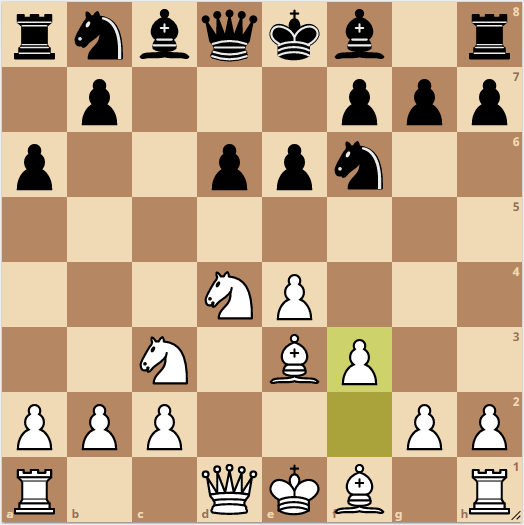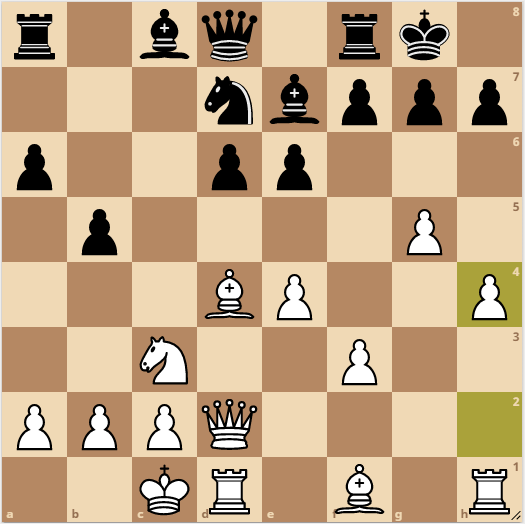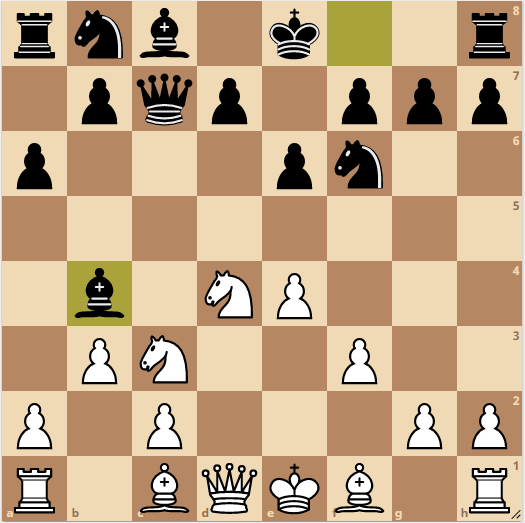Sicilian English Attack – An In-depth Tutorial
The English Attack is one of the most famous responses White poses to the Sicilian Defense. This attack is a variation under the Najdorf line of the Sicilian Defense, and this attack is only possible if Black plays d6 after Nf3 on the second move.
This attack had become very popular in the late 80s as it was played by English players like Nunn, Chandler, and Short, and hence the attack adopted the name. It is the most complex line under the Najdorf variation of the Sicilian Defense. White’s idea is to eventually castle Queenside.
The notations are as follows:
- e4 c5
- Nf3 d6
- d4 cxd4
- Nxd4 Nf6
- Nc3 a6
- Be3 e6
- f3

Main Line
- e4 c5
- Nf3 d6
- d4 cxd4
- Nxd4 Nf6
- Nc3 a6
- Be3 e6
- f3 Be7
- Qd2 0-0
- 0-0-0 Nc6
- g4 Nxd4
- Bxd4 b5
- g5 Nd7
- h4

White’s main aim here is to castle queenside and to play g4, which is the key move under this attack.
Once White follows g4 with g5 and h4, White’s idea is to pose a Kingside attack on Black. White now wants to play h5 and g6 to try to open some Black king files. White poses a counter-attack by playing Rc8 to control the ‘c’ file. Black can also play Ne5 to gain central control, but this move can be easily avoided.
Popular Line for Black
This line has become very popular in the last few years:
- e4 c5
- Nf3 d6
- d4 cxd4
- Nxd4 Nf6
- Nc3 a6
- Be3 e6
- f3 b5
- Qd2 Nbd7

In this variation, Black is trying to counterplay by attacking the Queenside and is also delaying Be7. After Qd2, Black immediately strengthens his counterplay on the Queenside by playing Nd7. White responds to this with g4, and now
Black cannot play Be7 just yet.
In this case, since the Black knight can play b8, the White knight can go to c6, which would be a disadvantage for Black. So Black has to defend the c6 square by playing Bb7 followed by White castling Queenside.
Black can then play Nb6 followed by Rc8, and it is integral for White not to allow Black to play Rxc3 after White moves the Queen from the d2 square. If the Black Rook sacrifices itself for the Knight on c3, then the White king will be exposed on the ‘b’ file, and the Black knight can come to a4 and attack the White king.
Black can now play moves like Qc7 and Ba3+.
Variation e5 (6)
If Black pushes the pawn to e5, the White knight will have to move to b3, leaving the d5 square as a weak square. Hence, Black will move to e6 to defend the d5 square. White now plays f3, followed by Qd2 and long side castling. White now has the Queen and Rook on one file allowing White to put pressure on the pawn on d6. White can also play g4 followed by g5 to move the Black knight on f6 so that the White knight can move to d5.
Variation Ng4 (6)
On the 6th move, Black has various possibilities, but usually, Black plays either e6 or e5. White also has to be careful of Ng4 on the 6th move. If Black plays Ng4 and captures the Bishop on e3, Black will have an advantage as Black would have a very strong dark square Bishop in the middle game since White’s dark square Bishop gets exchanged.
White can avoid Nxe3 on the 7th move by playing Bg5. Black can now play h6, followed by g5, forcing the White Bishop to g3. Black can then play Bg7, followed by the White Bishop moving to e2. White is now threatening h4 on the next move, so Black must play h5, after which the Bishop on e2 can capture the knight on g4. This would conclude where Black has better Bishops, while White has better development and knights.
Instead of playing Be2, after Black’s Bg7, White can also play h3. The Balck knight is forced to move to e5, followed by the White knight moving to f5. Black can now play Bxf5 followed by White’s exf5. Black can now play Nc6, and White can do Nd5. The idea of Nd5 is to play f6 and sacrifice the pawn but to destroy the pawn structure protecting the king simultaneously. To stop f6, Black plays e6.
This leads to a complicated position where Black has active pieces along with an exposed King.
If Black plays e6 on the second move:
- e4 c5
- Nf3 e6
- d4 cxd4
- Nxd4 Qc7
- Nc3 a6
- Be3 Nf6
- f3 Bb4

If Black plays d6 instead of Bb4, the English Attack is possible.
After the Bb4 pin on the 7th move, White will have to bring the Queen to d2 on the 8th move, followed by Black playing a very aggressive move that is d5. Now, if White does exd5 (9th move), Black plays Nxd5, allowing the Black knight to come on a central square and attacking the White knight on c3.
On the other hand, if White does not play exd5 on the 9th move, Black will play dxe4 followed by White’s fxe4, allowing the White pawn on e4 to be captured on the next move.





